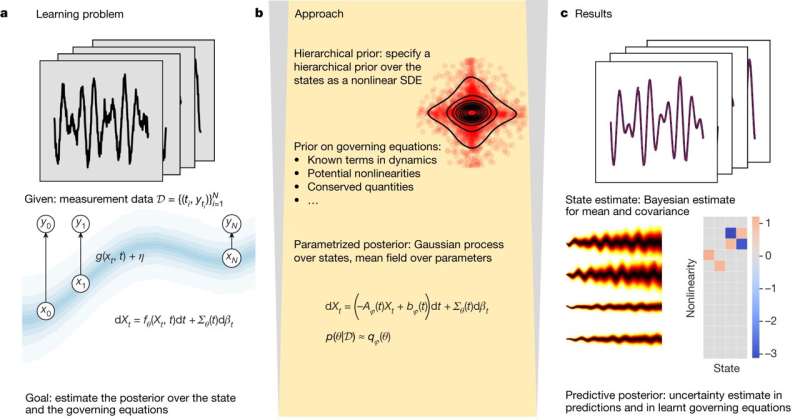October 12, 2023 report
This article has been reviewed according to Science X's editorial process and policies. Editors have highlighted the following attributes while ensuring the content's credibility:
fact-checked
peer-reviewed publication
trusted source
proofread
State-estimation method allows for efficient forecasts without details of underlying model

A pair of mathematicians, Kevin Course and Prasanth Nair at the University of Toronto's Institute for Aerospace Studies, has developed a new state-estimation method to create efficient forecasts without the need for the details of an underlying model.
Their project
is reported in the journal Nature. Brendan Keith, a mathematician at Brown University, has published a
State estimation is used in a wide variety of applications, all of which involve attempting to describe the state of a given object or system—it might, for example, involve using data describing an airplane in flight. Such estimations make it possible to keep track of large numbers of aircraft sharing an airspace by making use of aircraft, weather and radar data.
State estimations are also used to monitor industrial processes, helping to make them both safer and more efficient. Such systems, Keith points out, are typically needed when there is not enough direct evidence to provide a reasonable amount of context. Course and Prasanth explain that such systems reconcile data noise in observable systems with mathematical models created to describe their behavior. Most techniques involved in their use, they also note, involve the need for information about underlying knowledge of a system.
In this new effort, they have developed a new state-estimation technique to create forecasts where there are no details that describe an underlying model.
Their new technique is based on applying Bayesian inference, where statistical inference is calculated by starting with prior information about a system and then refining it using new information. Prior attempts to use such an approach led to computationally intense calculations, which proved challenging to carry out.
To get around that problem, the researchers found a way to calculate the parameters that should be needed for such inference by using stochastic approximations, allowing for parallel computations—which in turn allowed for developing efficient forecasts without the need for underlying details.
More information: Kevin Course et al, State estimation of a physical system with unknown governing equations, Nature (2023). DOI: 10.1038/s41586-023-06574-8
Brendan Keith, The technique that can find a system's state through data alone, Nature (2023). DOI: 10.1038/d41586-023-03070-x
Journal information: Nature
© 2023 Science X Network





















